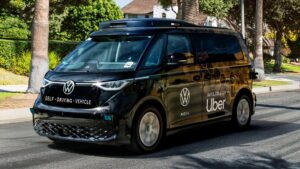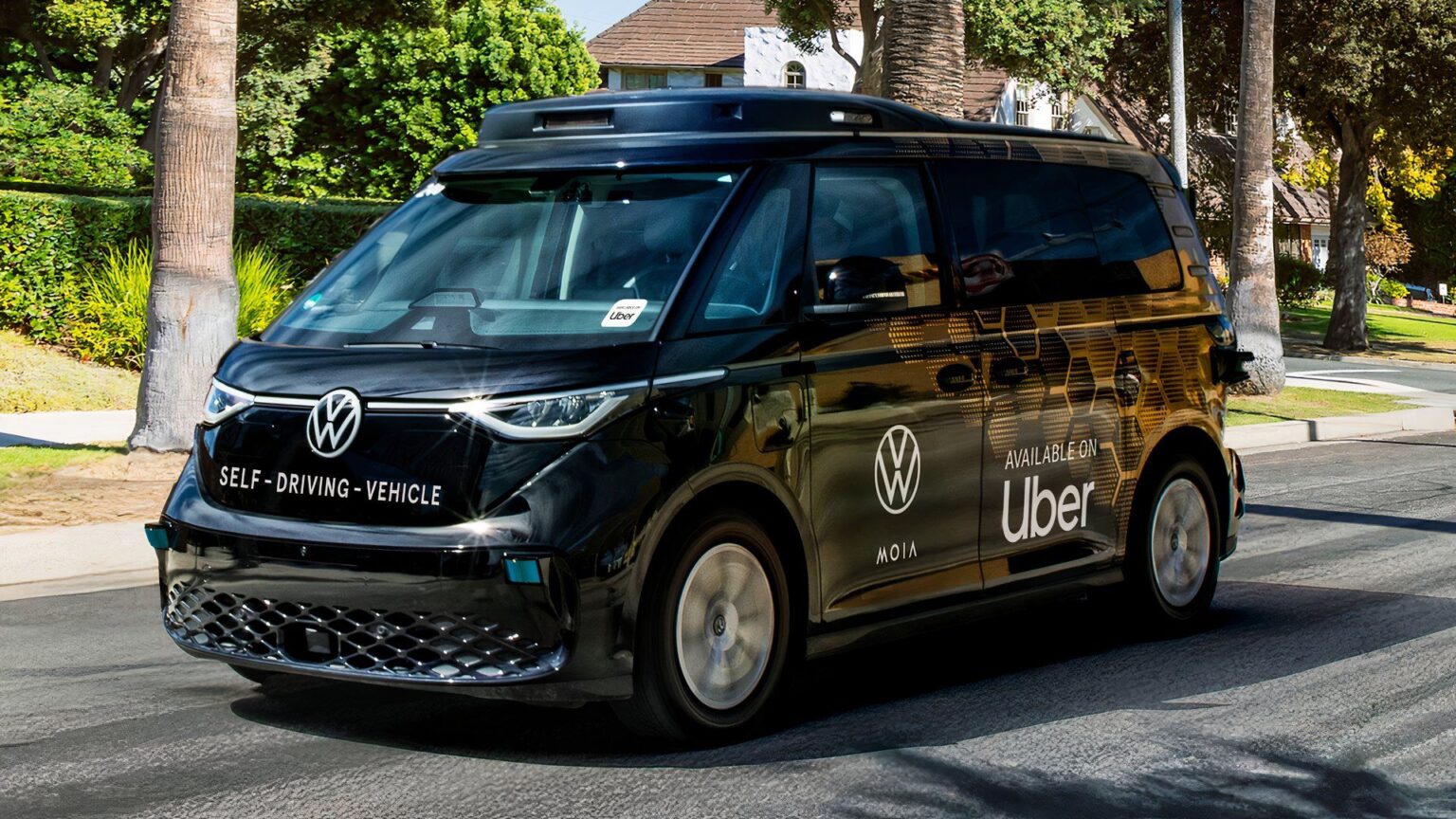Volkswagen and Uber have just signed an agreement to deploy thousands of ID. Buzz autonomous taxis using the Uber platform. That will take place nationally over the coming decade. But this is important for a few reasons: Waymo, which is a subsidiary of Alphabet, which is a spinoff of Google (got all that?!), has the biggest lead in autonomy, and is chasing rollouts nationwide across several American cities.
But days ago, Elon Musk cheerily brushed aside concerns that their robotaxi deployment was no longer on track. He said they’d deploy 10-20 autonomous taxis on the Model Y platform this June and these cars will be running around Austin. But there are several caveats for Tesla, especially. About which, you should keep reading.
Tesla Has A Bigger Problem Than Uber — Or Volkswagen
Tesla’s long-promised model is a subscription service where you’d join a tiered system as a frequent or semi-frequent user of cybertaxis and, likely, give up car ownership. That’s rational. Most cars aren’t in motion most of the time. They’re parked. However, for the same reason we don’t like waiting in the rain for a cross-town bus, we don’t love waiting for a driverless (or driven) taxi. A system where autonomous cars replicate private car ownership requires millions of vehicles.
What Elon Musk promised during Tesla’s earnings call was that by the end of 2026 the carmaker’s robotaxi business would “move the financial needle in a significant way,” according to reporting by Reuters. That feels pretty vague.
Volkswagen and Uber are joining hands because it’s super-smart marketing to have ID. Buzz vans roaming L.A. over the next several years, and if your Uber happens to be autonomous, swell. Meanwhile, VW gets big exposure as they tip-toe towards California licensing to allow greater autonomy. (That involves the Volkswagen-Ubers having human monitors aboard each vehicle as they rack up autonomous mileage.) But that kind of deliberate timeline would further crush Tesla’s tanking share price.
The Siren Sound Of Robotaxis
Tesla told investors they’re going to begin in Austin with Model Ys that have human remote monitors. They also said those Model Ys will have sonic monitoring, the Verge reported, so that the cars can “hear” sirens from emergency vehicles. This is just…weird.
In 2017 — yes, eight years ago — Waymo announced they were training their cars on how to respond to emergency vehicles. Today there are V2X and V2V technologies and networks that enable “piloted” and autonomous vehicles to share information so they know about accidents, construction zones, and EMS. This is in part how Waymo has managed to scale to a point where their vehicles are now clocking 200,000 miles a week in San Francisco, Phoenix, Los Angeles, and Austin, with Atlanta, Miami, and Washington, D.C. coming next.
What You’ll See On The Road
You’ll note that the image VW released with this announcement, at the top of this story, features a large Lidar and sensor array atop an ID. Buzz, from partner, Mobileye. Waymo’s cars also feature these kinds of sensors. Musk lashed out at Waymo’s costs during the earnings call and has regularly called anything beyond camera sensing a kind of cheat code that shouldn’t be necessary.
But we’ve heard from carmaking engineers for years — most recently from Volvo — who argue that overlapping sensor technology is critical for autonomy, because light alone provides incomplete input. Tesla is clearly admitting as much by adding sonic sensors to their robotaxi deployment in Austin, whether Musk is saying so out loud or not.
TopSpeed’s Take
Sure, we’re here to tell you about car news, not political news, but we cannot ignore a non-technical problem for Tesla: The brand isn’t exactly popular these days. This isn’t our opinion. This is what the market is saying, with sales off 13 percent so far in 2025.
Worse, Musk is unpopular. Quinnipiac University has conducted two polls, one month apart. The first, in late February, found that 55 percent of Americans said Musk had too much power in decisions to cut the federal government and a month later, 57 percent said so. That’s hardly an isolated survey. Pew research has also found that the majority of Americans don’t like the government cuts (and Musk’s handling of them), and Tesla’s declining sales are partly a consequence of Musk’s actions.
Tesla and Musk are synonymous. Most Americans cannot name the chairperson of Waymo or Volkswagen or Uber. For better or worse, that means that if one of those people wears a dumb t-shirt or makes a controversially questionable arm motion (unless they do so in a very public setting with the entire world watching), we’re unlikely to know or care.
But when a robotaxi rolls up in Austin, getting into one is going to be perceived as an endorsement of Musk and what he stands for.
Waymo’s model doesn’t depend on Americans giving up car ownership. We use taxis already in cities nationwide, and if we’re not choosing Waymo, Lyft and Uber have the rest of the market sewn up. Is it any more logical for Tesla to force-feed into this realm than to presume the Cybertruck can supplant the F-150?
So the logic that Musk can either edge out Uber or that Americans will prefer ride-hailing to driving themselves is hard to swallow. And if there’s one segment of the population that would even do so, Elon Musk has successfully offended that former Tesla legion: eco-conscious, tech-savvy consumers. Even if that hoard wants to quit driving in, say, Los Angeles, they’re probably going to be much happier hailing a robo-driven ID. Buzz painted sunshine yellow, than a cybertaxi that embodies a sour vision of the future.
Read the full article here



